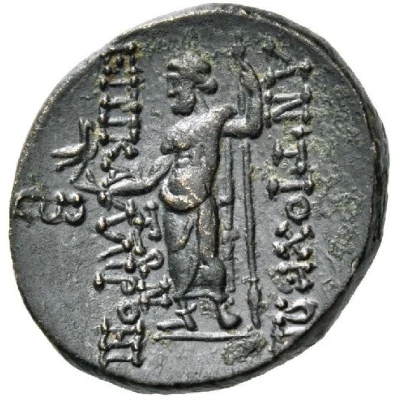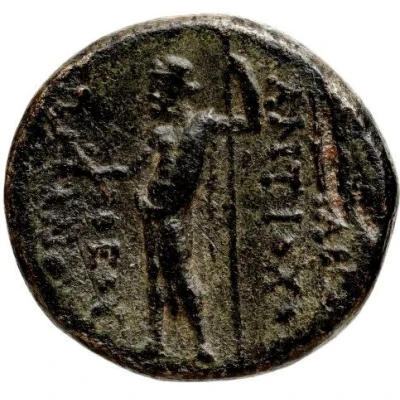


© Nomos AG
Dichalkon - Antiochos IV Antioch ad Callirhoem 168 BC - 164 BC
| Bronze | 6.0 g | 19 mm |
| Issuer | Seleucid Empire (Seleucid Empire (305 BC - 64 BC)) |
|---|---|
| King | Antiochos IV Epiphanes (175 BC - 163 BC) |
| Type | Standard circulation coin |
| Years | 168 BC - 164 BC |
| Value | Dichalkon (1⁄24) |
| Currency | Drachm |
| Composition | Bronze |
| Weight | 6.0 g |
| Diameter | 19 mm |
| Shape | Round |
| Technique | Hammered |
| Orientation | Variable alignment ↺ |
| Demonetized | Yes |
| Updated | 2024-10-10 |
| Numista | N#427456 |
|---|---|
| Rarity index | 97% |
Reverse
Zeus standing left, holding eagle and scepter.
Script: Greek
Lettering:
ANTIOXEΩN
TΩN
EΠI KAΛΛIPOHI
Unabridged legend: Antiochia ad Callirrhoe (Edessa)
Translation:
King Antiochos (IV)
Antiochia on the Callirrhoe
Interesting fact
One interesting fact about this coin is that it features a unique blend of Greek and Persian influences in its design. The obverse side of the coin depicts the bust of Antiochos IV, while the reverse side features a representation of the goddess Tyche, who was revered in both Greek and Persian cultures. This blending of cultural influences reflects the complex history of the Seleucid Empire, which was founded by a Greek general but eventually came to encompass a vast territory that stretched from the Mediterranean to the Indus River.



